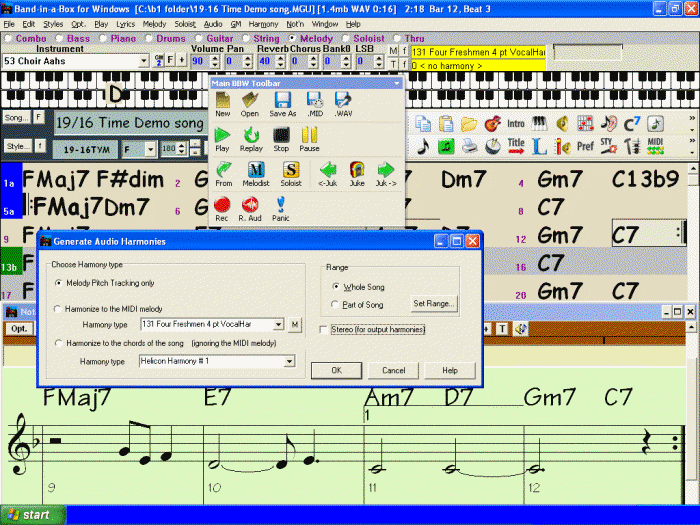

So my track stack usually looks like "Sib Bass" "BIAB Bass", "Sib Drums", "BIAB Drums". Once done, combining that with BIAB output it's easy to edit out the doublings - at bits when you want the bass or drums to be playing precisely what you've written, edit out the BIAB pattern. I just score to metronome on the downbeat for Latin and pop and on 2 and 4 for jazz.

Band in a box 2019 full#
And why sweat it anyway - nobody's ever going to read your full bass and drum parts. When you're dealing with a large band, life's too short to be scoring bass, drums and percussion note-for-note. I write "slash, fills and occasional detail" parts for these instruments in Sib which only sound the written detail. It's like giving a lead sheet to musicians. I also use it as a bass, drums and perc auto-sequencer for scoring jazz, Latin and pop. Or making your own playalongs just for practice. I know cruise musicians who swear by it -the ents officer is always coming up with some bloody silly idea for tomorrow night.Īlso good for putting together a "this kind of vibe" reference recording to send to bands (usually along with parts). It's great for knocking up remarkably convincing generic (and they cover a lot of genres) backing tracks in minutes. Perhaps if you got really stuck into MIDI editing, but that loses the advantage of the stitched-together sampled RealTracks. I don't think it's really quite ready for that kind of precision work. A bit off-topic, but I have tried BiaB & thought it worked OK, especially the more recent iterations.īut the big sticking point for me has always been that the end result is never ever going to be exactly what I wanted to hear & the effort involved in editing BIAB`s output has always been more for me than if I just sequenced the various parts myself.Īm I missing some kind of magic workflow speeder-upper?Ĭan you tailor your own "styles" within BiaB?Īs it is, it just feels like all those arranger keyboards of yester year to me.


 0 kommentar(er)
0 kommentar(er)
